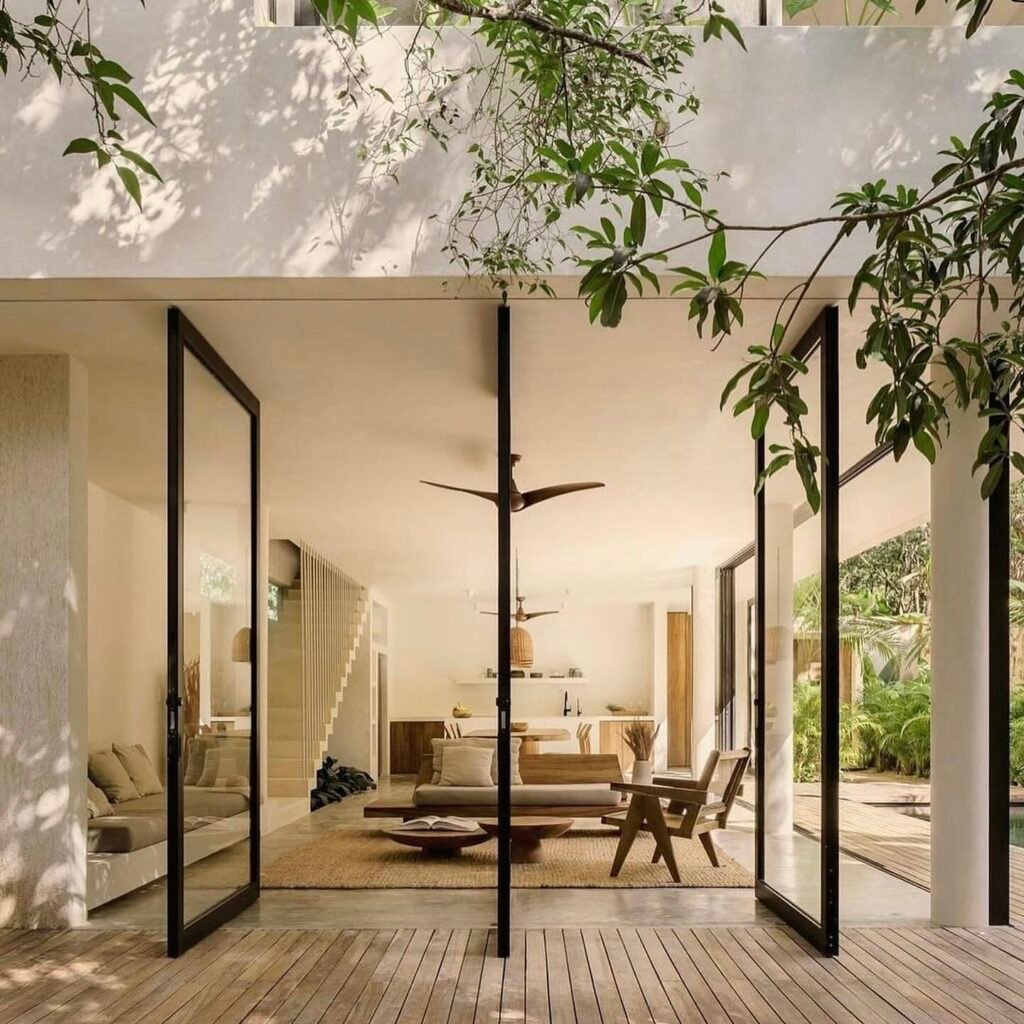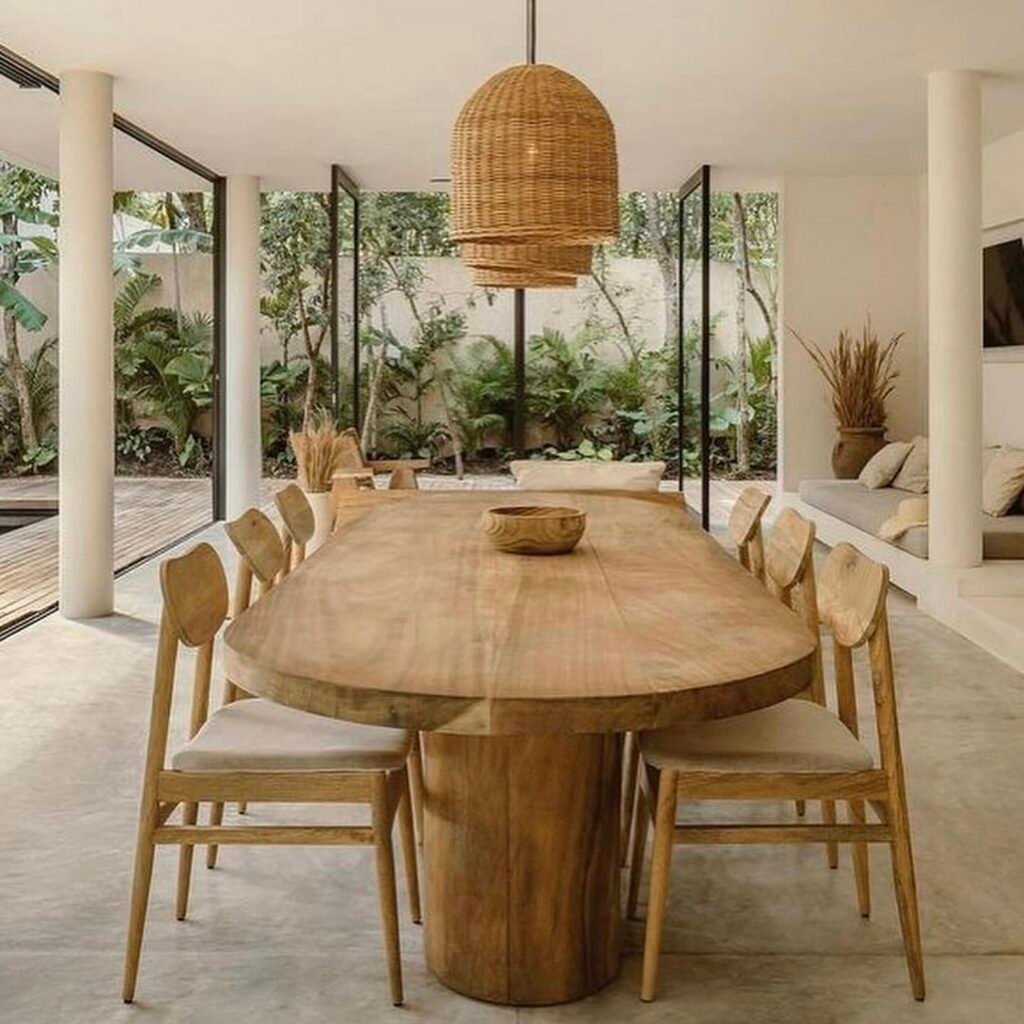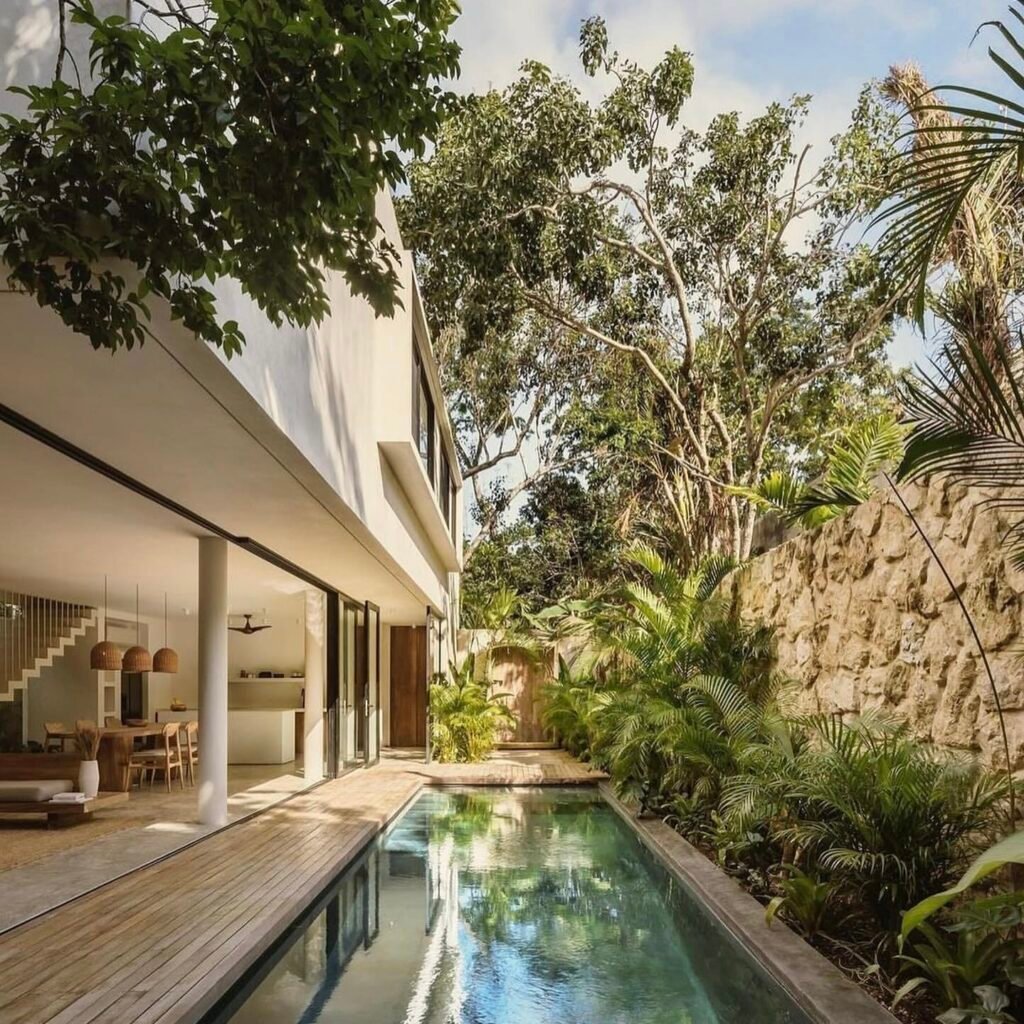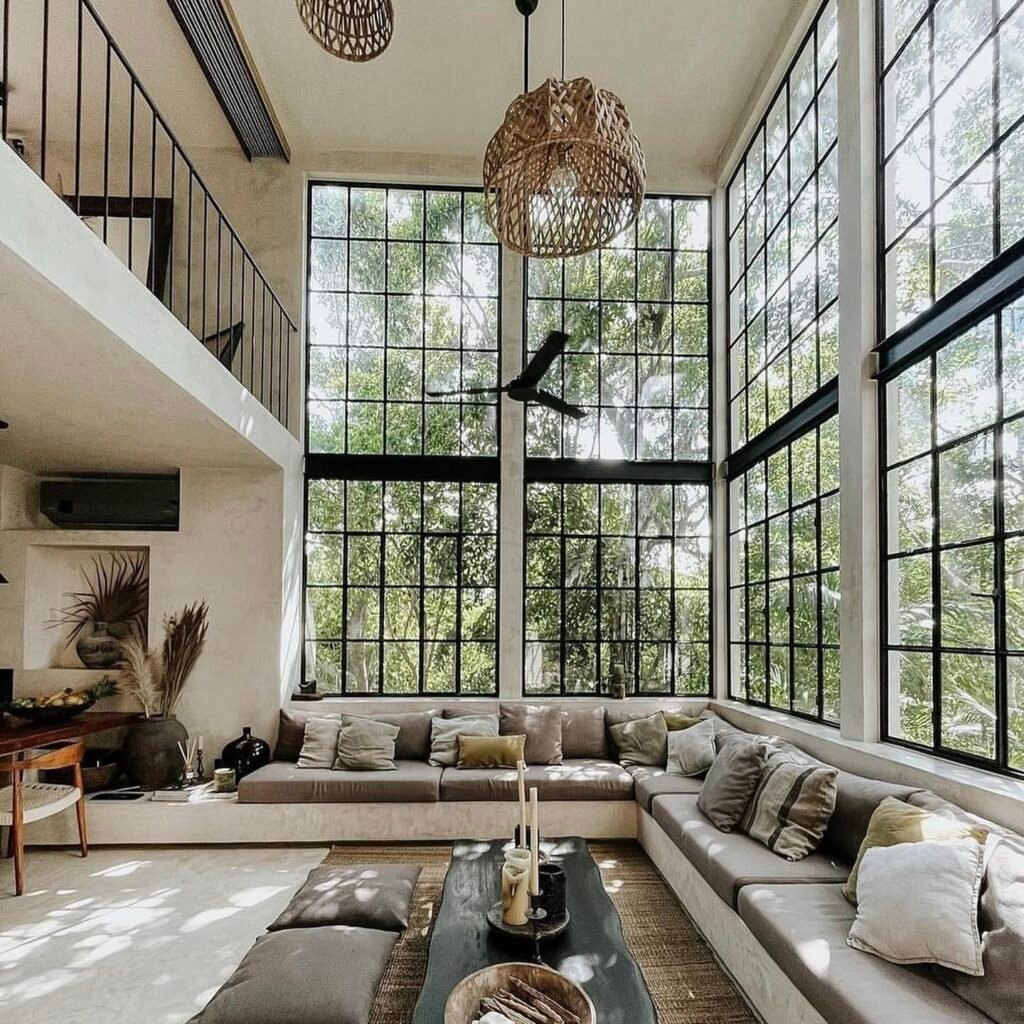Nature has always been a muse for humankind, and architectural design is no exception. From the towering redwoods influencing skyscraper design to the intricate patterns of spiderwebs informing suspension bridges, the natural world offers a treasure trove of inspiration for architects. In today’s blog, we’ll delve into biophilic design principles and explore how architects are seamlessly blending their creations with the natural environment.
Biophilic Design: A Bridge Between Humanity and Nature
Biophilia, meaning “love of life,” is the innate human inclination to connect with nature. Biophilic design translates this concept into the built environment, incorporating elements of nature to improve human well-being and create a more harmonious relationship with the surroundings.
Here are some key biophilic design principles that architects utilize:
Natural Light and Ventilation: Maximizing natural light exposure and incorporating natural ventilation strategies not only reduce reliance on artificial lighting and air conditioning but also create a healthier and more invigorating indoor environment.

Natural Materials and Textures: Using natural materials like wood, stone, bamboo, and incorporating organic textures like those found in leaves or bark, brings the outdoors in and creates a sense of connection with nature.

Water Features: The sight and sound of water can be incredibly calming and restorative. Water features like fountains, reflecting pools, or even strategically placed aquariums can add a touch of tranquility to any space.

Views of Nature: Framing views of natural landscapes, incorporating courtyards with lush greenery, or creating rooftop gardens allows occupants to connect with nature.

Biomimicry: This approach involves mimicking nature’s designs and processes to create sustainable and efficient buildings. For instance, studying termite mounds can inspire natural ventilation systems, while observing spiderwebs can inform the creation of lightweight yet strong building materials.

The Future of Design: A Symphony of Nature and Innovation
As we move forward, biophilic design principles are poised to play an increasingly important role in shaping the future of architecture and design. By drawing inspiration from nature and fostering a deeper connection with the environment, we can create not only aesthetically pleasing but also sustainable and healthy spaces for generations to come. Let’s embrace the wisdom of nature and continue to learn from its timeless design language.




